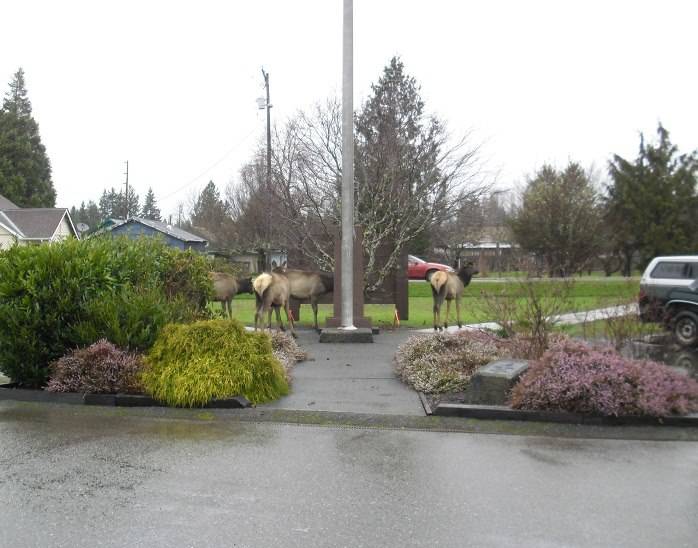By Pat Neal
It was daylight in the swamp on the opening day of elk season. It is a day steeped in a tradition that harkens back to an earlier time when people depended on getting an elk for their winter’s meat.
With the European invasion, the Olympic elk were market hunted for their meat, antlers, hides and ivory teeth or just shot and left to rot by thrill-seeking lowlifes who liked to watch them fall.
In 1905 the Washington State Legislature stopped all elk hunting. In 1909 President Teddy Roosevelt, one of the greatest elk hunters that ever lived, established Mount Olympus National Monument, a precursor of Olympic National Park to save the elk.
The Government put a bounty on wolves, bears, and cougars. Varmint hunting became respectable. It was a way many homestead families could survive the Great Depression in the wilderness.
By 1937 the elk had expanded beyond the carrying capacity of many parts of their range. Elk were starving and loaded with internal parasites. The Game Commission opened an eight-day season in October and November in Clallam and Jefferson Counties for any and all elk.
William (Billy) Welsh a columnist for the Port Angeles Evening News, a forerunner of the Peninsula Daily News, journeyed to the upper Hoh River that October to cover what he called “The Elk War.” Welch described the opening day salvo as 5,280 elk hunters opened fire on previously un-hunted elk as a “battle”. As with any battle, there were casualties.
Before our current emphasis on hunter safety, it was a common practice for groups of hunters to surround an unsuspecting elk herd and open fire. This meant the hunters were often firing at each other while blazing away at the elk. One man died in a fusillade of bullets fired at a bull elk. A boy shot himself in the leg while cleaning his gun. Three hunters were badly burned when one of the nimrods shot a can of gasoline inside their tent. Another drowned trying to drive through the flooding Hoh River before the invention of four-wheel drive.
The casualties might have been higher but a gully washer dumped ten inches of rain. The elk hunters were forced to concentrate on just trying to survive.
Welch described the sorry spectacle when thousands of soaking wet elk hunters tried to drown their sorrows in liquor. They descended upon Forks, which had run out of whiskey long before the elk season had even started. All Forks had left was some gin, which was never very popular on the frontier.
In all, an estimated 800 elk, one donkey, and a packhorse were killed. In his book, “The Last Wilderness,” Murray Morgan described a farmer’s cow that was mistaken for an elk and shot. The farmer propped the cow up against a tree where it kept getting shot all season long by confused hunters. As the story goes, after elk season the farmer melted her down for lead.
This past opening day of elk season was mighty quiet. I did not hear a single shot fired. Things have changed. The wolves may be gone but the cougars and bears are protected by laws against hound hunting. Their numbers have sky-rocketed. Meanwhile, the elk have been hunted to near death.
The big herds of sixty or seventy elk are gone. Replaced by bunches of a dozen or so with few legal bulls. I quit and went home before noon. There were fresh elk tracks in the lawn. If I had just slept in and stayed home, I might have got an elk. Oh well, maybe next year.



